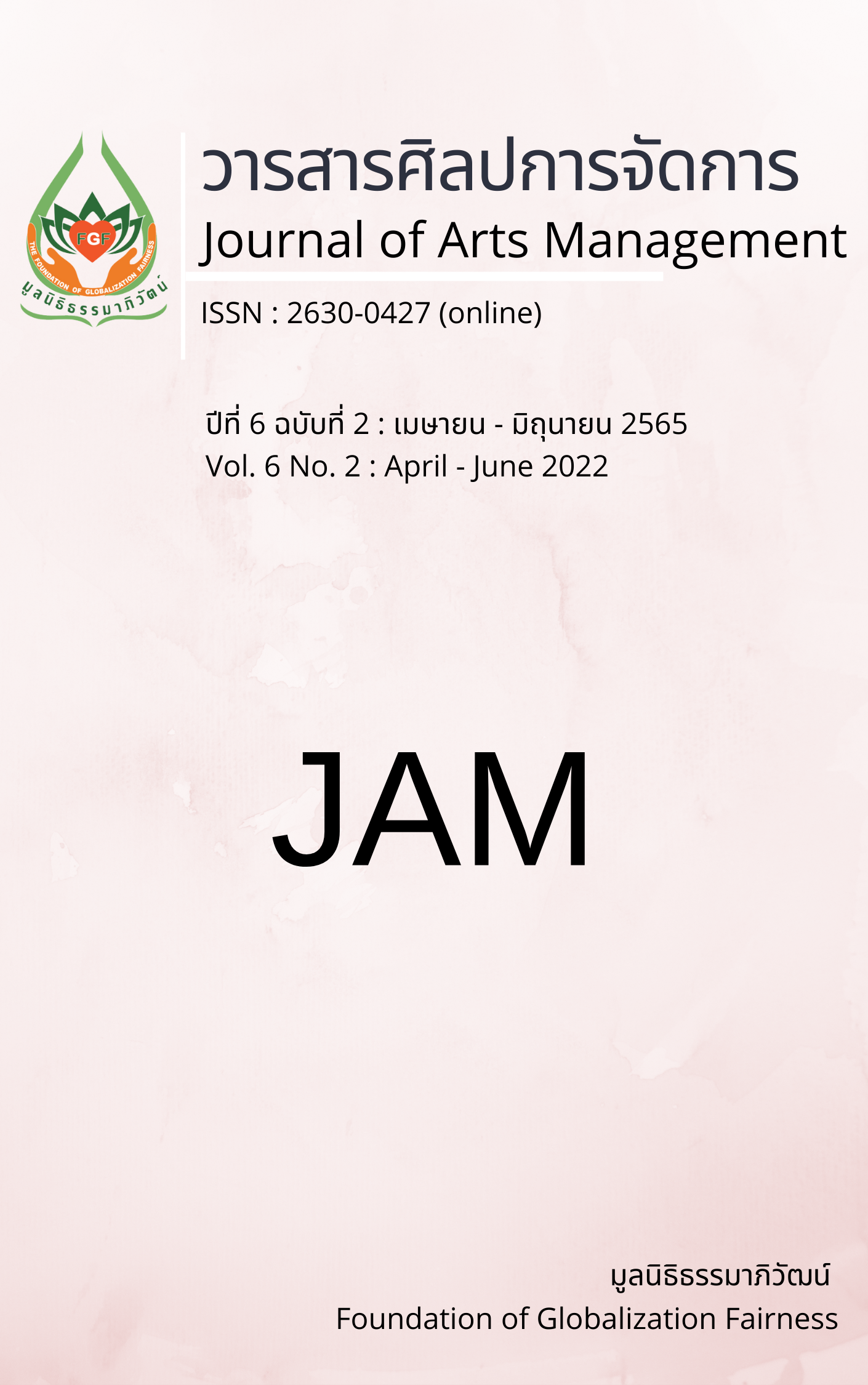A Using information Technology Tools and Social Media Model to Support Life in Crisis
Main Article Content
Abstract
A using information technology tools and social media model to support life in crisis aimed to 1) study the behavior of using tools and social media in crisis; 2) study the need for tools and social media to support life in crisis; and 3) propose a using information technology tools and social media model in crisis. The population and sample consisted of 400 people with purposive selection. The research instruments were behavior questionnaires and needs questionnaires, and analyzed the data by average, standard deviation, Pearson Correlation Analysis, and assessing needs by Modified Priority Need Index. The results showed that: 1) most of the observed variables were mean at a high level; 2) the level of need for tool behavior and social media was found to be at a high level; and 3) the correlation between a total of 66 pairs of variables, all observed variables was correlated, and the correlation of all variables was in the same direction. The test results of the need for tools and social media to support life in crisis overall and individual items, paired-samples t test, it was found that the calculated t ratio was statistically significant at the .05 level that Thai people had changed their behavior in using tools and social media in 3 areas: 1) education, 2) entertainment, and 3) socializing.
Article Details

This work is licensed under a Creative Commons Attribution-NonCommercial-NoDerivatives 4.0 International License.
Views and opinions appearing in articles in the Journal of Arts of Management It is the responsibility of the author of the article. and does not constitute the view and responsibility of the editorial team I agree that the article is copyright of the Arts and Management Journal.
References
Davis, F. D. (1989). Perceived usefulness, perceived ease of use, and user acceptance of information technology. MIS quarterly, 13(3), 319-340. https://doi.org/10.2307/249008
Dusit Poll. (2020). Thai behavior how much has changed in the age of COVID-19?. Bangkokbiznews. https://www.bangkokbiznews.com/social/958385
James, P. W. (2014). Media literacy (7th ed.). Sage Publications.
Kongsuk, S. (2001). Introduction to the internet. Emphan Publishing Company.
Ministry of Digital Economy and Society. (2019). What is digital literacy. Office of the Civil Service Commission (OCSC).
https://www.ocsc.go.th/DLProject/mean-dlp
Ministry of Information and Communication Technology. (2016). digital development plan for economy and society ministry of information and communication technology. Ministry of Information and Communication Technology.
Pankaew, K. (2004). Current conditions, problems and use of the Internet for education among students, Graduate level. Khon Kaen University.
Ratchatanon, O. et al. (2020). The impact of e-commerce business on local entrepreneurs. Bank of Thailand.
Ruchiwattanakon, J. (2013). Behavior of different types of media exposure. of undergraduate students[Master’s Thesis. The Institute of Physical Education Chaiyaphum Campus].
Saelim, S. et al. (2015). Behavior of using line applications in Bangkok. Thammasat University.
Songsunthornwong, C. (2016). Service innovation: A strategy that creates competitive advantages of service businesses. Journal of Modern Management, 14(2), 13-24.
Srisontisuk, S., & Aimimtham, S. (2020). The behavior of social media usage of high school students in Vientiane, Lao People's Democratic Republic. Humanities & Social Sciences, 37(2), 120-142.
Sueasakul, A. (2004). Crisis Communication. A comparative case study of SARS and avian influenza by the Ministry of Public Health. Thammasat University.
Sukchuen, S. (1997). The implementation of the national information technology policy: A case study office of the civil service commission. Ramkhamhaeng University.
Thongmeekhaun, T. et al. (2020). online social network using behavior among nursing students of Boromarajonani College of Nursing, Songkhla. Journal of Nursing Siam University, 21(41), 67-77.
Wongwanich, S. (2007). Needs assessment research. Chulalongkorn University.
Yamane, T. (1973). Statistics: An introductory analysis (3rd ed.). Harper and Row.


